
MMWR Surveillance Summaries
Scope & Guideline
Elevating Epidemiology: Your Source for Vital Trends
Introduction
Aims and Scopes
- Public Health Surveillance:
The journal publishes articles primarily focused on various public health surveillance systems, tracking disease incidence, prevalence, and trends across different populations. - Epidemiology and Disease Trends:
A core area of the journal is the analysis of epidemiological trends, providing insights into the dynamics of diseases such as tuberculosis, malaria, and autism spectrum disorders over time. - Mortality and Morbidity Data:
The MMWR Surveillance Summaries emphasizes the importance of mortality and morbidity statistics, highlighting preventable deaths and health disparities among various demographic groups. - Focus on Vulnerable Populations:
The journal often addresses health issues pertinent to vulnerable populations, including immigrants, children, and minorities, thereby contributing to health equity discussions. - Surveillance Methodologies:
The journal showcases diverse methodologies used in health surveillance, including data collection techniques and analytical frameworks, which are critical for public health practitioners.
Trending and Emerging
- Mental Health Surveillance:
There is a growing emphasis on mental health, particularly related to suicidal thoughts and behaviors among adults, highlighting the increasing recognition of mental health as a critical component of overall public health. - Substance Use and Addiction:
Recent publications have shown a rising focus on surveillance related to opioid use disorder, especially in pregnant women, reflecting the urgent need to address the opioid epidemic in the United States. - Violent Death Reporting:
The journal has expanded its coverage of violent deaths, including homicides and suicides, indicating a heightened awareness and need for data-driven approaches to prevent violence. - Autism Spectrum Disorder Monitoring:
There is an emerging trend in the surveillance of autism spectrum disorder, with increased focus on early identification and prevalence studies, reflecting growing concerns about developmental disorders among children. - Waterborne Disease Surveillance:
The recent articles on waterborne disease outbreaks underscore an emerging interest in environmental health and its implications on public health, especially in the context of climate change and infrastructure.
Declining or Waning
- Surveillance of Infectious Diseases:
There has been a noticeable reduction in surveillance articles focusing on specific infectious diseases such as malaria and coccidioidomycosis, possibly due to improved control measures or a shift in public health focus towards non-communicable diseases. - Chronic Disease Surveillance:
The coverage of chronic diseases such as asthma has seen less frequent updates, which may indicate a saturation of existing data or a prioritization of more pressing public health issues. - Historical Data Reports:
The publication of historical data reports, such as those focusing on long-term trends in diseases, has decreased, possibly reflecting a focus on more current data and immediate public health challenges. - Specific Disease Surveillance in Non-Metropolitan Areas:
Surveillance studies specifically targeting non-metropolitan areas have diminished, which may suggest a shift towards more generalized data that encompasses broader geographic regions.
Similar Journals

Central European Journal of Public Health
Advancing Knowledge for Effective Health InterventionsThe Central European Journal of Public Health, ISSN 1210-7778 and E-ISSN 1803-1048, is a vital academic forum published by the NATIONAL INSTITUTE OF PUBLIC HEALTH, Czech Republic. With its comprehensive coverage of contemporary issues in public health and medicine since its inception in 1993, this journal aims to bridge the gap between research and practice, fostering a deeper understanding of health dynamics within Central Europe and beyond. As a Q3 ranked journal in both the fields of Medicine (miscellaneous) and Public Health, Environmental and Occupational Health as per 2023 metrics, it provides an accessible platform for innovative studies, policy analyses, and reviews that contribute to the global discourse on public health challenges. Though primarily based in the Czech Republic, it welcomes contributions from a worldwide audience, enhancing its scope and impact. Researchers, practitioners, and students will find invaluable insights that not only enrich academic scholarship but also inform effective public health interventions.

Journal of Infection and Public Health
Empowering Knowledge for a Healthier TomorrowJournal of Infection and Public Health is a premier open-access journal published by ELSEVIER SCIENCE LONDON, dedicated to advancing knowledge in the fields of infectious diseases, public health, and environmental health. Since its inception in 2008, this esteemed journal has become a cornerstone of research dissemination, especially after transitioning to an open-access model in 2017, allowing wider accessibility to groundbreaking studies. With an impressive impact factor and ranking in the Q1 category for Infectious Diseases and Public Health as of 2023, the journal stands at the forefront of scientific inquiry, boasting a Scopus rank of #22 out of 665 in Public Health, underscoring its influence and reach in the academic community. Researchers, professionals, and students alike will find the journal's rich repository of peer-reviewed articles invaluable for ongoing education and practice in a rapidly evolving field. For contributing to the global understanding of health dynamics, Journal of Infection and Public Health is a vital resource, inviting scholars to explore, engage, and contribute to the crucial discussions shaping our world.

JMIR Public Health and Surveillance
Empowering global health initiatives with cutting-edge surveillance insights.JMIR Public Health and Surveillance is a premier open access journal that has been at the forefront of public health research since its inception in 2015. Published by JMIR PUBLICATIONS, INC in Canada, this journal holds an impressive Q1 ranking in both Health Informatics and Public Health, Environmental and Occupational Health as of 2023. With a commendable Scopus Rank of #18 out of 665 in Public Health and #10 out of 138 in Health Informatics, JMIR Public Health and Surveillance stands out for its rigorous peer-reviewed articles that contribute significantly to the advancement of knowledge in these vital fields. The journal is committed to promoting research that advances the understanding and surveillance of health trends, disease outbreaks, and population health metrics, thus serving as an invaluable resource for researchers, professionals, and students alike. By facilitating open access to high-quality content, it ensures that results of critical public health research are readily available, ultimately helping to inform policy and public health initiatives across the globe.
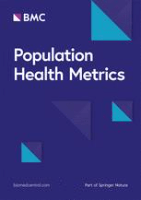
Population Health Metrics
Connecting Research to Real-World Health OutcomesPopulation Health Metrics, an esteemed journal published by BMC, has established itself as a leading platform for researchers and practitioners in the fields of epidemiology and public health. Since its inception in 2003, this open-access journal from the United Kingdom has been dedicated to advancing the understanding of health metrics, offering insightful analyses and data-driven research that address critical global health challenges. With an impressive Q1 ranking in both Epidemiology and Public Health, Environmental and Occupational Health categories, along with a robust Scopus percentile ranking in its field, it plays a pivotal role in disseminating impactful research findings. Researchers and professionals are encouraged to contribute to and engage with the journal's broad array of topics, ensuring that the conversations around population health continue to evolve and influence policy and practice worldwide. With the commitment to accessibility and quality, Population Health Metrics is essential reading for anyone dedicated to improving health outcomes at the population level.

EPIDEMIOLOGY AND INFECTION
Unveiling Trends in Epidemiology and InfectionEPIDEMIOLOGY AND INFECTION is a premier open-access journal published by Cambridge University Press, dedicated to advancing the field of epidemiology and infectious diseases. With an ISSN of 0950-2688 and E-ISSN of 1469-4409, this journal has been at the forefront of disseminating impactful research since its inception in 1970. As of 2023, it holds a prestigious Q2 ranking in both the fields of Epidemiology and Infectious Diseases, reflecting its significant contribution to these critical areas of study, with Scopus rankings placing it at #70 in Epidemiology and #163 in Infectious Diseases. The journal aims to publish high-quality, peer-reviewed studies that contribute to our understanding and management of infectious diseases globally. Operating under an open-access model since 2020, EPIDEMIOLOGY AND INFECTION ensures that research is accessible to a wide audience, fostering collaboration and innovation among researchers, professionals, and students alike. With a commitment to excellence, this journal is an essential resource for those looking to stay abreast of the latest developments in epidemiological research and infectious disease management.

Eurosurveillance
Advancing global health through open access research.Eurosurveillance is a prestigious journal dedicated to the field of epidemiology, public health, and infectious diseases, published by the European Centre for Disease Prevention and Control since 1996. With an impressive Q1 ranking across various categories, including Epidemiology and Public Health, it consistently stands at the forefront of research dissemination, making it an invaluable resource for researchers, professionals, and students alike. The journal boasts an outstanding reputation, as evidenced by its Scopus rankings, where it ranks in the top 1% to 3% in multiple relevant categories. As an Open Access publication, Eurosurveillance ensures that vital findings are freely accessible to a global audience, fostering collaboration and innovation in the fight against infectious diseases. With a dedicated reach from 2001 to 2024, the journal addresses contemporary challenges in public health and virology, reinforcing its significance in shaping policies and research initiatives across the world.
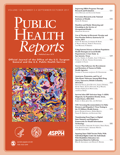
PUBLIC HEALTH REPORTS
Elevating public health discourse since 1945.PUBLIC HEALTH REPORTS is a premier journal in the field of public health, published by SAGE PUBLICATIONS INC in the United States. With its ISSN 0033-3549 and E-ISSN 1468-2877, this esteemed publication has been an influential voice in the discipline since its inception in 1945. Recognized for its rigorous scholarship, it currently holds a distinguished Q1 ranking in the 2023 category of Public Health, Environmental and Occupational Health, emphasizing its significance with a Scopus rank of #186 out of 665, placing it in the 72nd percentile. The journal aims to disseminate high-quality research that addresses pressing health issues and promotes evidence-based practices, making it a vital resource for researchers, professionals, and students alike. Although it is not an open-access journal, PUBLIC HEALTH REPORTS continues to offer extensive insights and advancements pertinent to the global public health landscape, thereby fostering a deeper understanding and engagement with critical health determinants. Researchers and health practitioners are encouraged to contribute to this dynamic forum where knowledge and innovation converge.
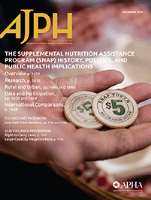
AMERICAN JOURNAL OF PUBLIC HEALTH
Elevating public health discourse with impactful studies.The American Journal of Public Health, published by the American Public Health Association, stands as a cornerstone in the field of public health and epidemiology since its inception in 1949. With its rigorous peer-review process and a robust commitment to advancing knowledge and research practices, this journal holds a prestigious position in the academic community, as reflected in its 2023 Scopus ranking, where it is placed in the top percentile (93rd) within the categories of Public Health and Environmental and Occupational Health. The journal's focus encompasses a broad spectrum of public health topics, making it essential reading for researchers, practitioners, and students dedicated to improving population health. Subscribers can access invaluable insights through its collection of innovative studies and reviews, thereby reinforcing the journal's role in shaping public health policy and practice. By bridging research and real-world application, the American Journal of Public Health remains a vital resource for those engaged in the quest to improve health outcomes across diverse communities.
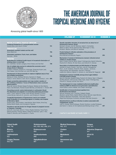
AMERICAN JOURNAL OF TROPICAL MEDICINE AND HYGIENE
Unveiling breakthroughs in parasitology and virology.The American Journal of Tropical Medicine and Hygiene, published by the American Society of Tropical Medicine & Hygiene, serves as a pivotal platform for the dissemination of innovative research and clinical findings in the realm of tropical medicine and health. With an illustrious history dating back to 1945, this journal has maintained its commitment to enhancing global health, particularly in the fields of Infectious Diseases, Parasitology, and Virology. It currently boasts an impressive impact factor and ranks in the Q1 category for Parasitology and Q2 for Infectious Diseases and Medicine (miscellaneous), highlighting its academic prominence. The journal's mission is to advance research, showcase cutting-edge studies, and foster collaboration among researchers, healthcare professionals, and students dedicated to tackling tropical diseases and improving public health worldwide. While access is not open, the journal remains a critical resource for anyone looking to stay informed on the latest advancements in the field.
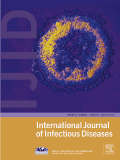
INTERNATIONAL JOURNAL OF INFECTIOUS DISEASES
Exploring breakthroughs in infectious disease management.INTERNATIONAL JOURNAL OF INFECTIOUS DISEASES, published by ELSEVIER SCI LTD, stands as a leading platform in the realm of infectious diseases, contributing significantly to the global understanding of this critical field. With an impressive impact factor, the journal maintains a distinguished Q1 ranking across various categories, including Infectious Diseases, Medicine (miscellaneous), and Medical Microbiology, demonstrating its high relevance and influence among contemporary research. Since its inception in 1996, it has embraced an Open Access model, allowing for wider dissemination of essential research findings that can inform public health policies and clinical practices. With a commitment to advancing scientific knowledge, this journal is not only a vital resource for researchers and professionals but also serves as an invaluable educational tool for students interested in the complexities of infectious diseases and their management. For those looking to stay at the forefront of research and innovation in this field, the INTERNATIONAL JOURNAL OF INFECTIOUS DISEASES is an indispensable resource.